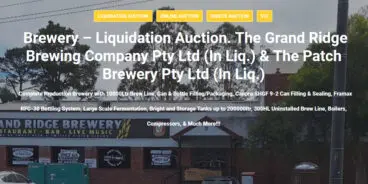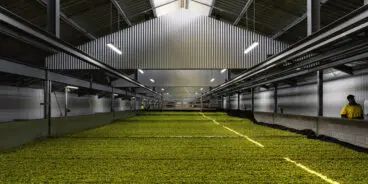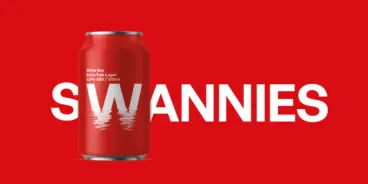
Recap: The birth of Australia's own beer style
This post originally appeared on January 30, 2010. We decided it worthy of an Australia Day rerun. [JA]
The birth of a beer style is most often a matter of geological and agricultural circumstance. Regions with certain water profiles gradually adapted their beers to best suit their palates to that very water, examples of which include the highly hopped ales of Burton or the porters and stouts of London. At other times beers evolved or even just continued to exist due to availability (or lack there of) of certain crops or ingredients, such as the gruit beers of Scotland and saisons of Belgium. In the case of Australia the birth of the nation’s only true beer style came by perhaps quite different condition.
The very earliest of Australian beer is seemingly completely lost to history. The first Australians undoubtedly brewed forms of beer from indigenous grains and other fermentables, however modern knowledge of these beers is, on the face of it, completely absent. Brewing history since European settlement is fortunately a little better known and has wound down an interesting path to lead us to our modern situation of lager dominance and our world beer style contribution – the Sparkling Ale.
From the start of the colony the brewing of beer was encouraged. Beer was seen to be a much more wholesome alternative to rum, whisky and other spirits. It was also realised that a strong brewing sector such as that enjoyed “back home” in England would have positive effects on the new colony as a whole. Brewing would help to found agricultural industry as well as provide employment in both its own trade as well as manufacturing, hotel and other industry. Or so it was thought… There were even grants and gifts by the governments to encourage and help entrepreneurs to establish these early breweries.
The earliest two of these commercial colonial brewers were of course John Boston and James Squire, the later of which is celebrated today in the form of beers produced by the Malt Shovel brewery. Brewing during this period was a difficult occupation and both of these early brewers suffered problems related to ingredient supply and adverse condition. This was to continue for many years and colonial beer was soon to suffer from a bad reputation and settlers developed a preference for imported ale and spirits, much to the dismay of government.
Many breweries were started during this period, and to an inexperienced outsider it must have seemed to be an easy way to make a quid. However, brewing in the British ale tradition in such a warm climate before the advent of climate control and without our present knowledge of microbiology was a sure fire recipe for failure rather than a recipe for beer and so many of these breweries folded after only a very short period trading. There also emerged of course unscrupulous brewers who, due to perhaps unreliable ingredient supply or perhaps due to their own brewing shortcomings, started adulterating their beer. Copper sulphate, tobacco and cocculus indicus (a very bitter poison) were at times used to spice early beer and only served to further the bad reputation of colonial Australian ale.
Of course even if a brewer managed to make a decent beer through this difficult time it might have still suffered before touching the consumer’s lips. Beer might suffer by being kept for too long or in a hot environment resulting in sour beer. There was also a tendency by some publicans to water down a good batch in order to stretch it further resulting in a good brew becoming very ordinary.
Brewers were always searching for ways to improve their beer and there was calls from time to time for a “lighter ale” (presumably meaning in strength, body and colour) to be the leading way for Australian beer. By the mid 1800s the world had seen the birth of a very pale beer known as Pilsner; soon pale lagers appeared in Munich, Dortmund and other European centres. In England itself “pale ale” was becoming very popular but it was with lager beer that Australia’s future was to be. A letter to the Australian Brewers Journal stated that “the time will surely come when the public in this country will demand their ale cold, full of gas, and a long drink for their money.” As the years passed there came more calls for lager brewing to become the norm in this country. Eventually that time did come when the Cohn brothers produced Australia’s first lager beer – Excelsior, but by this time another form of beer had started to emerge that was also very suited to the Australian drinking climate and that didn’t require the additional expenses of refrigeration associated with lager production. That beer was sparkling ale.
Early Sparkling Ale
The early sparkling ales probably differed from each other in many areas relating to strength, malt bill and hopping rates but most certainly shared similarities in having a lighter colour (pale copper to gold) and a higher carbonation than other ales of the time. The style seemed particularly popular in gold rush towns and may have also been known by the title of “light ale” or “light bitter”. The higher carbonation of the style (which today certainly doesn’t seem so high) probably assisted in giving the beer the perception of a lighter body and improved “drinkability”, an approach practised by many Belgian brewers. However the style didn’t have a very long-lived heyday with lager beer eventually coming to dominate by the turn of the century leaving only one producer (for the next 90 or so years) of the style in existence – Coopers.
In the USA at the same time there was a similar move towards lager beer to overcome some of the shortcomings of traditional ale in their own warmer climate. The approach there was a bit different with immigrant brewers opting to use lager brewing techniques at ale fermentation temperatures to result in a beer style that came to be known as steam beer or California common. The steam title seems to have resulted from the higher than traditional ale carbonation that the beer carried, resulting in a puff of “steam” as the cask was tapped or the bottle opened. Like sparkling ale, steam beer dwindled back to one producer (the Anchor Steam Brewery) until recent times.
Thomas Cooper founded the Coopers brewery in 1862 and initially his sparkling ale recipe (like other producers of the style) would have been based on British ales, but evolved due to the availability of local ingredients and conditions into what we now know as Coopers Sparkling Ale. It was noted by the legendary beer hunter Michael Jackson that the colour of Coopers Sparkling Ale seemed to pale slightly between his first tasting in the 1970’s and the late 1990’s when he wrote about it – a situation that can and will surely happen over time, intentionally or otherwise, with a living and evolving product such as beer.
Sparkling Ale today
In its modern guise sparkling ale (or Australian ale as is also sometimes called) is a beer from 4.5-6% ABV. It is usually pale gold to light copper in colour and more often than not is bottle conditioned with yeast that leave the beer with a hazy to cloudy appearance. This same yeast also seems to generally impart a good degree of fruity esters to the beer. Hops are typically of Australian origin (what else should we expect), although originally this would not have always been the case, and bitterness should be in balance with light to moderate bready malt flavours. There is much debate by devotees of the style as to whether the beer should be decanted of the yeast when pouring or served sur lees. In my own case I like to purchase Coopers in the 750ml format so as to enjoy the first glass bright and the second in its hazy glory, a technique that is practised by at least one other Coopers-loving small brewer that I know.
Out-Coopering Coopers
Although Coopers was the last bastion of the style for the greatest part of its history, there are today many small producers of the style. Each of these new small producers are adding further depth to the recognition of the style and include such breweries as Mountain Goat, The Lord Nelson, Nail Brewing and Bridge Road Brewers of Beechworth. I served Bridge Roads’ Australian Ale at a beer and food matching lunch I hosted about a year ago when one of the devoted beer attendees remarked that the Beechworth brewery may well have “out-Coopered Coopers”, praise it seems that was of the highest order.
On an international scale the style is unfortunately not recognised (or perhaps known of) by many competitions or beer books, but this is something that will hopefully and surely change over time. On a trip to the USA a few years ago I tasted an Australian/sparkling ale that was being made by a small brewery that showed much promise…. perhaps one day the style will be produced by adventurous brewers the world over.
In the meantime, it is ours to enjoy!





